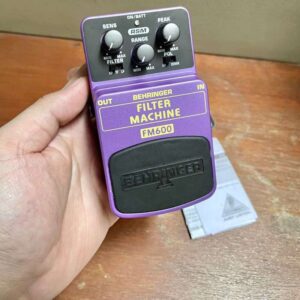Description
The Behringer BEQ700 Bass Graphic EQ Pedal is in New condition and made by Behringer , it is a great Power Supply EQ Boost Bass Guitar Effect Pedal- The Behringer BEQ700 Bass Graphic EQ allows guitarists to shape their perfectly desired bass tones with 7-band equalisation. Each band offers up to 15 dB of boost or cut and covers a frequency range from under 50Hz to over 10kHz letting you sculpt your sound over a wide range. The BEQ700 has an integrated status LED to show when the effect is on and the status of the battery life. The bass pedal operates on a 9-volt battery or the PSU-SB DC power supply (sold separately). . Available from Just Pedals for only £ 24.3 Features Dedicated 7-band EQ Wide frequency range from 50Hz to 10kHz with powerful 15dB boost/cut per band Status LED Runs on 9V battery or Behringer PSU-SB DC power supply First-class electronic on/off switch Specifications Input: 1/4 TS Input Impedance: 500kΩ Output: 1/4 TS Output Impedance: 1kΩ Power Connector: 2 mm DC Jack Negative Centre Battery: 9V Type 6LR61 Power Consumption: 30 mA Weight: 0.33 kg Dimensions Height: 54 mm Width: 70 mm Depth: 123 mm

















Reviews
There are no reviews yet.